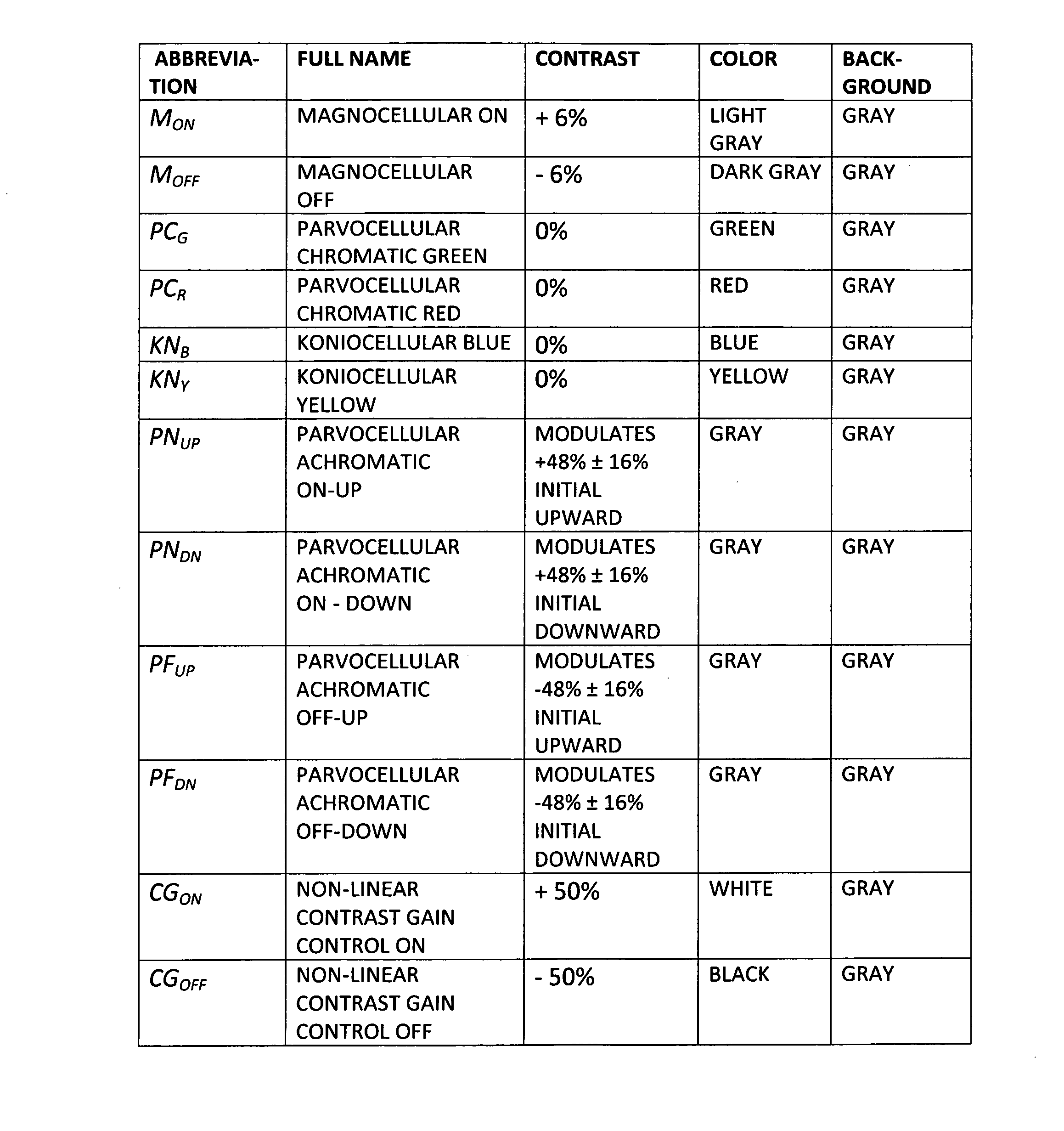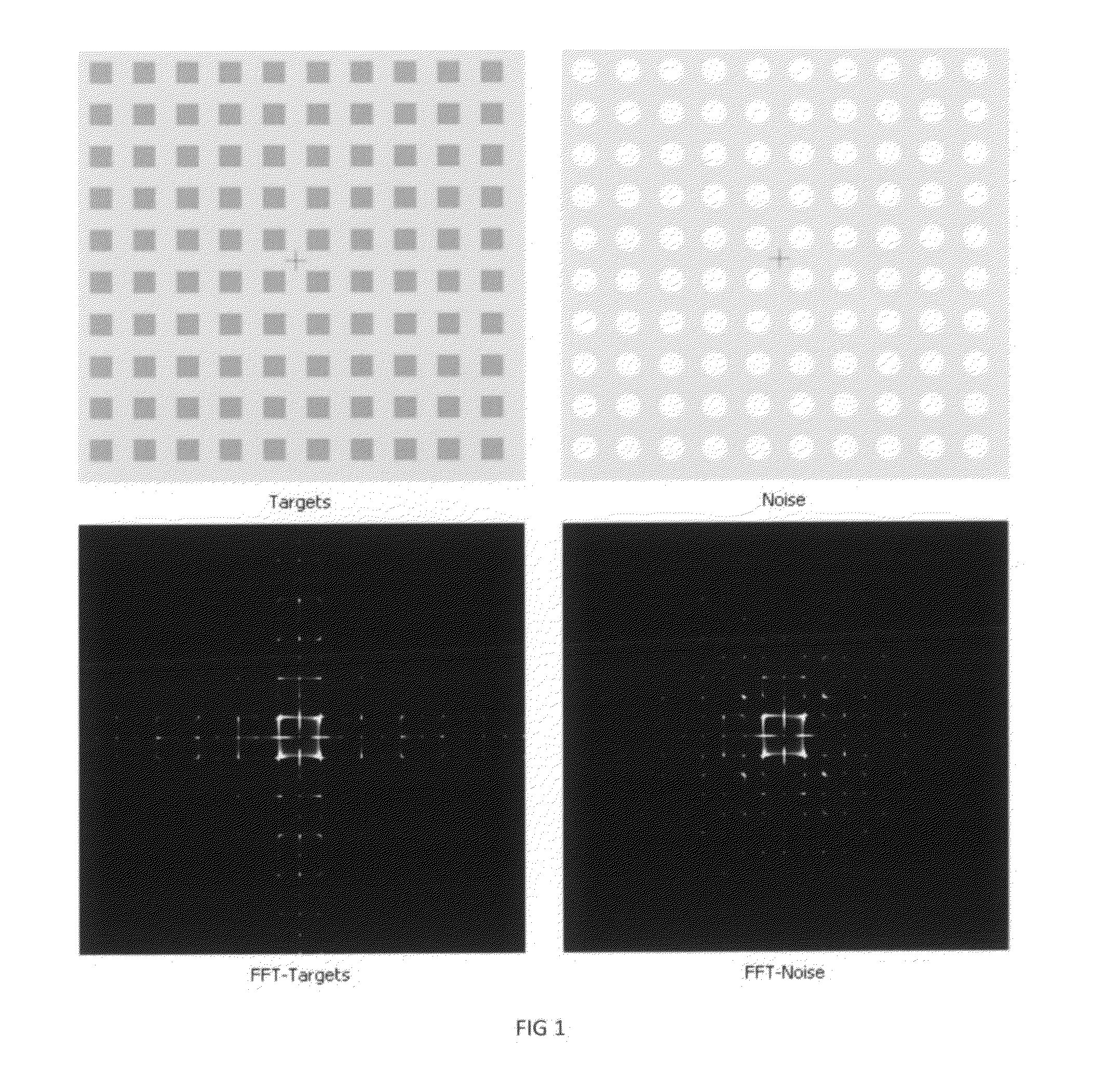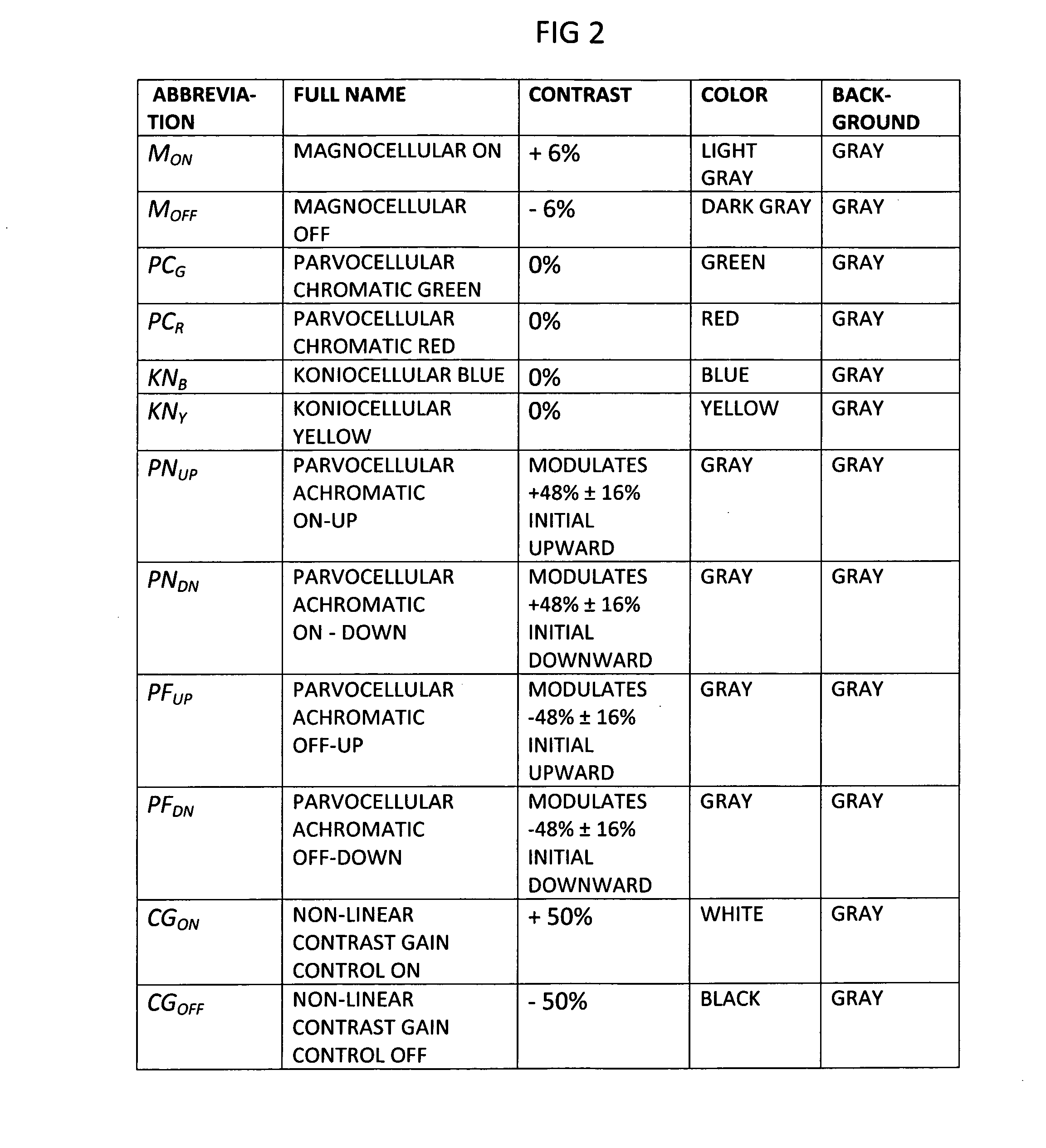Method for measuring visual function and visual attention in a continuous performance test
a continuous performance and visual attention technology, applied in medical science, diagnostics, angiography, etc., can solve the problems of deficiency in visual system of participants, reduced cpt task performance, inaccurate measurement of deficiency, etc., to achieve accurate measurement of participant's physiological arousal
- Summary
- Abstract
- Description
- Claims
- Application Information
AI Technical Summary
Benefits of technology
Problems solved by technology
Method used
Image
Examples
Embodiment Construction
The invention is a neuropsychological test method. Its primary purpose is as a visual assessment of attentional mechanisms, able to distinguish different patterns of attentional performance and compare them with normative data. However, it also has utility in measuring critical flicker fusion, and a measure of fine motor speed.
The invention relies on a lookup table created with the assistance of a photometer to associate the monitor's gray levels (0-255 for 32-bit color, 0-65535 for 64-bit color) with photometric luminance. These luminance levels are computed at least once every three months, in order to ensure a high degree of accuracy in stimulus generation.
Using this data (and the subject's chromatic flicker fusion points for chromatic stimuli), the invention presents stimuli believed to preferentially elicit each individual visual pathway, particularly the magnocellular, parvocellular chromatic, koniocellular, and parvocellular achromatic. In order to assess the function of the ...
PUM
 Login to View More
Login to View More Abstract
Description
Claims
Application Information
 Login to View More
Login to View More - R&D
- Intellectual Property
- Life Sciences
- Materials
- Tech Scout
- Unparalleled Data Quality
- Higher Quality Content
- 60% Fewer Hallucinations
Browse by: Latest US Patents, China's latest patents, Technical Efficacy Thesaurus, Application Domain, Technology Topic, Popular Technical Reports.
© 2025 PatSnap. All rights reserved.Legal|Privacy policy|Modern Slavery Act Transparency Statement|Sitemap|About US| Contact US: help@patsnap.com



